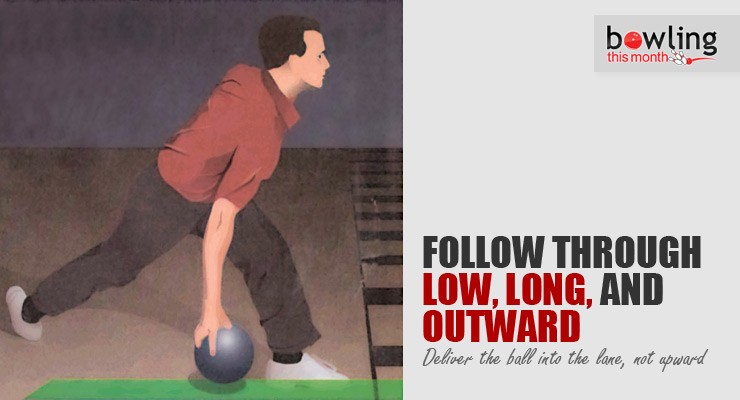In a previous issue, I stressed the importance of avoiding the lift and loft method of execution. Although this was popular and perhaps a necessity in the rubber ball era, it became a detriment with the advent of urethane bowling balls.
Equally as important is the completion of a quality follow through. An ideal follow through is the culmination of proper execution that results in balance, accuracy, power, carry percentage, and—above all—consistency. How can the ideal follow through be accomplished? Simply put…by delivering with a fully extended arm: out and toward the pins with minimum arm bend (see Figure 1).
Older instructional manuals and books recommended, “reach for the ceiling”; “follow through with your hand behind your ear”; and “lift and turn.” While these instructions seemed appropriate for rubber balls and shellac surfaces, I feel these methods of execution for follow through are detrimental in today’s bowling environment.
Throughout my coaching career, I have recommended feeding the ball into the lane, rather than up and out on the lane. Why do I object to releasing the ball in an upward trajectory? Picture this scenario: When you release the ball upward, what is occurring? A closer look will reveal the ball is already in a spinning motion in midair prior to landing on the lane, which makes it almost certain to bounce, overreact, and veer off target.
Conversely, as stressed in the previous issue, a ball delivered in a low outward manner is similar to tossing a flat rock across a lake…the rock skims across the top of the lake. Likewise, the ball should skim through the front part of the lane and head toward the intended target, undeterred and unimpeded (see Figure 2). The path to the pocket is determined by this smooth send-off.
Reactive bowling balls have had a profound effect on the modern game. This is particularly evident with youngsters who have become enamored with wide-arcing shots that rip the rack on light hits. These “bombs” have also captivated some seasoned bowlers who struggled in their efforts to apply sufficient revolutions for added carrying percentage. Engrossed with their desire to deliver powerful strike balls, many ordinary bowlers sacrifice their normal style by utilizing exaggerated follow throughs and rely on hooking surfaces, with strategically placed core weights ...
Already a premium member? Click here to log in.


